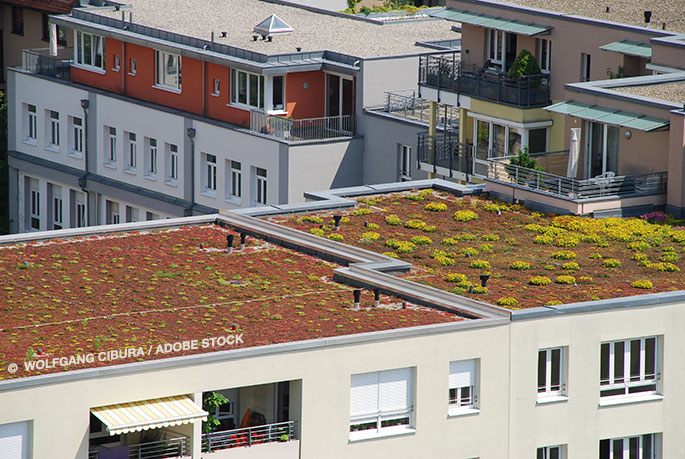
Flat roofs are not an uncommon design choice when it comes to commercial buildings. From huge office buildings to shopping malls, and everything in between, flat roofs tend to be the order of the day. However, if you’re setting up shop in a location with a flat roof, it’s important to ask yourself just how energy-efficient your roof is. Because while flat roofs can be a boon, under the wrong circumstances, they can be a huge drain on your resources, driving up your costs and putting a bigger burden on your heating and cooling system.
As Facilities Net points out, there are a lot of factors about what makes a flat roof efficient or inefficient when it comes to your energy costs. The major concern is going to be what sort of insulation the roof boasts, but it’s also important to consider the color of the roof, and whether it was designed to be energy-efficient, or not.
For example, a standard, flat roof is directly in the path of the sun for a huge portion of the day. That means it’s soaking up all those rays, and getting heated up like a huge skillet. And if the roof is covered with a material like black rubber, then it’s absorbing even more heat. According to the Department of Energy, roofs like this can reach temperatures of 150 degrees (or more) when left under the summer sun.
That is not good for your bottom line, since it means you’re going to have to spend a lot more money to keep your building air-conditioned, and comfortable. However, with that said, there are things that can be done to make these roofs more energy-efficient, and budget-friendly.
Ways to Increase A Flat Roof’s Energy-Efficiency
Even if you don’t want to put solar panels down on your flat roof, there are still ways to make it a lot friendlier regarding its energy-efficiency and to maintain your corporate social responsibility.
First and foremost, it’s important to make sure the roof is properly insulated. Bad insulation is often responsible for letting the heat in during the summer, and the heat out during the winter, and replacing it is the first thing any business should do in order to cut heating and cooling costs. In addition to making sure your insulation is doing its job, though, it’s important to use colors that absorb less heat. Lighter colors, like white tiles, can keep a building cooler simply by not holding onto all the solar radiation they can snatch.
Oftentimes those two, basic solutions are enough to create serious savings in terms of energy. However, for businesses that want to go the extra mile, it’s possible to get roof coverings, paints, or tiles that actually reflect light away from the roof. These reflective coverings can represent an additional cost up-front, but they should be thought of as an investment. Over the long-term, they often pay for themselves in terms of energy-efficiency, and savings.
There is No One-Size-Fits-All Answer
When it comes to flat roofs and energy efficiency, it’s important to consider where your building is. Buildings in Texas will have different needs than those in Chicago, for example. By taking your unique needs into consideration, you are more likely to craft a solution that works for your building, and which handles your needs.




































































































































 Three Ways to Engage Teams and Clients to Maximize Your Recycling Program Engagement
Three Ways to Engage Teams and Clients to Maximize Your Recycling Program Engagement  How to Integrate Accessibility Into Your Sustainability Planning
How to Integrate Accessibility Into Your Sustainability Planning  Why Park Benches Can Promote Workplace Well-Being
Why Park Benches Can Promote Workplace Well-Being 
